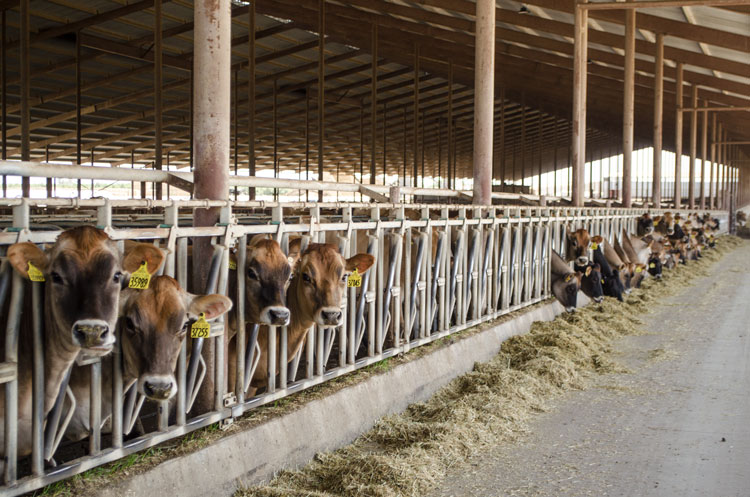
In the competitive eating environment of freestall housing, stocking density is by far the leading contributor to competition along the feedbunk. That being said, the type of railing installed in a freestall can either complicate or ease competition during peak feeding times.
“The bottom line is that you can expect no difference in feed intake between headlocks and post-and-rail systems,” Rick Grant explained in a recent Miner Institute Farm Report article. Daily feeding time is also almost identical between the two systems. However, they do differ in competitive displacements, particularly during peak feeding times.
In the article’s cited research, headlocks along the feedbunk reduced competition at least when compared to a post-and-rail feedbunk system. That’s because headlocks reserve a specific amount of room for an animal, and dominant cows are not able to just push down the rail, displacing other cows.
For farms that do utilize headlocks, Grant reminded farmers to condition heifers to headlock use before they enter the milking herd so that it won’t be a new experience for the animal. He also recommended not using headlocks for aversive procedures so that the cows don’t associate the headlocks with negative experiences.
Pay attention to stocking density
In a University of British Columbia study described by Grant, cows were evaluated in a post-and-rail system in comparison to headlocks at various stocking densities.
“Not surprisingly, cows were displaced more frequently from the feedbunk as stocking density increased for cows fed at the post-and-rail,” Grant wrote. “And again, not too surprisingly, the negative effects of overcrowding the feedbunk were most pronounced for subordinate cows such as first-calf heifers or smaller, less competitive cows.”
If overstocking is part of your housing system’s limitations, consider instituting strategies to reduce aggression at the feedbunk such as always having feed available and frequent feed pushups.








